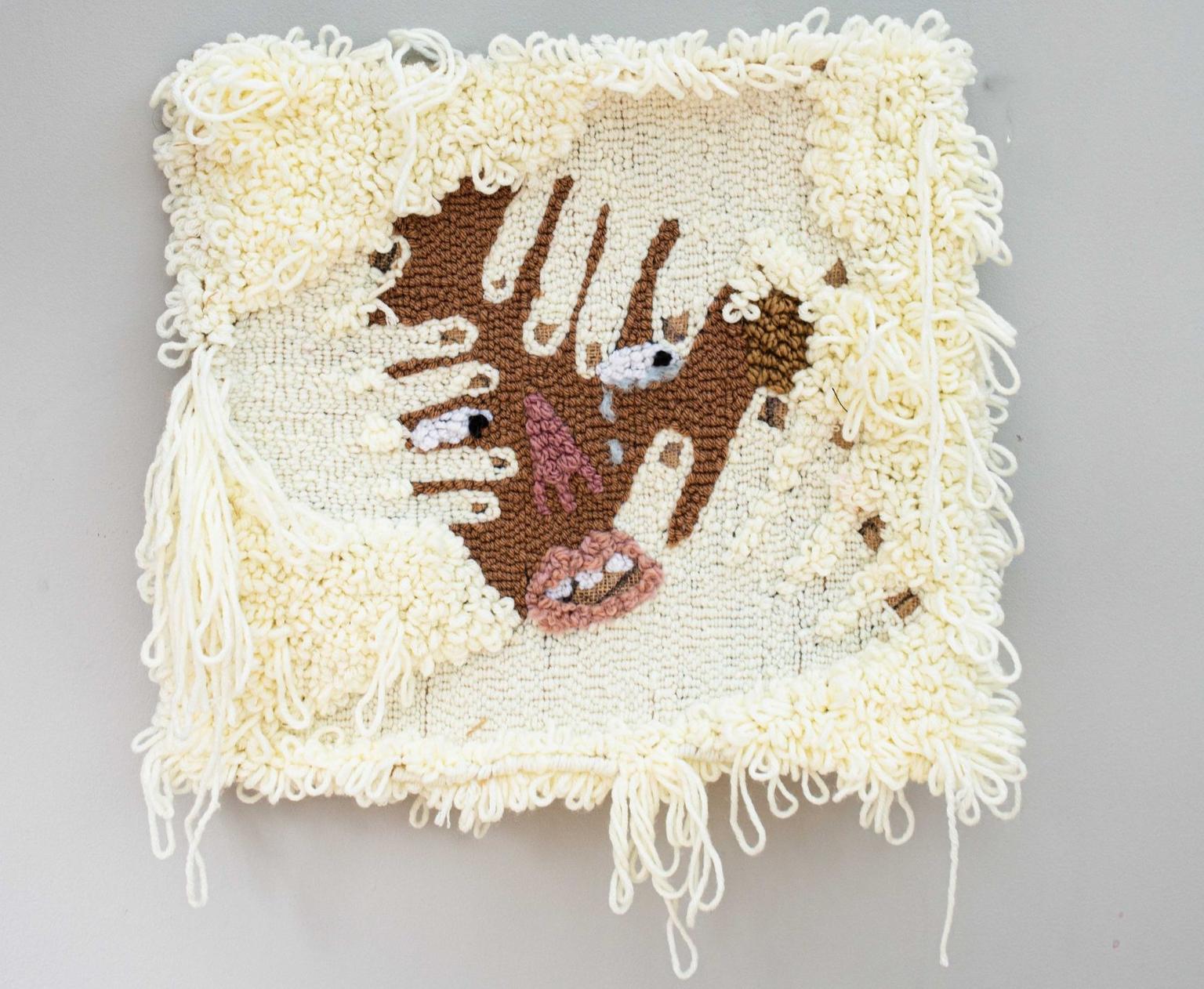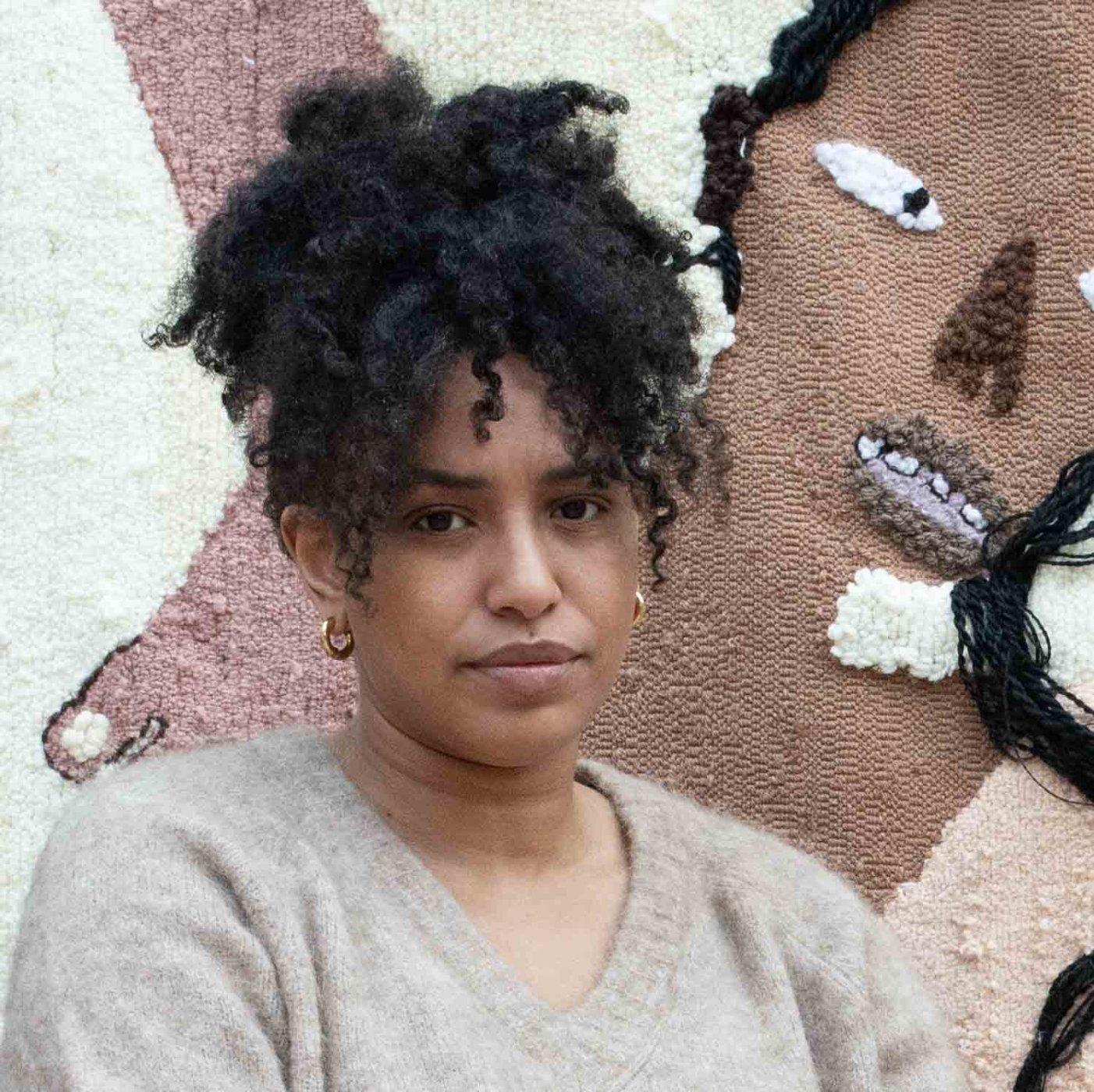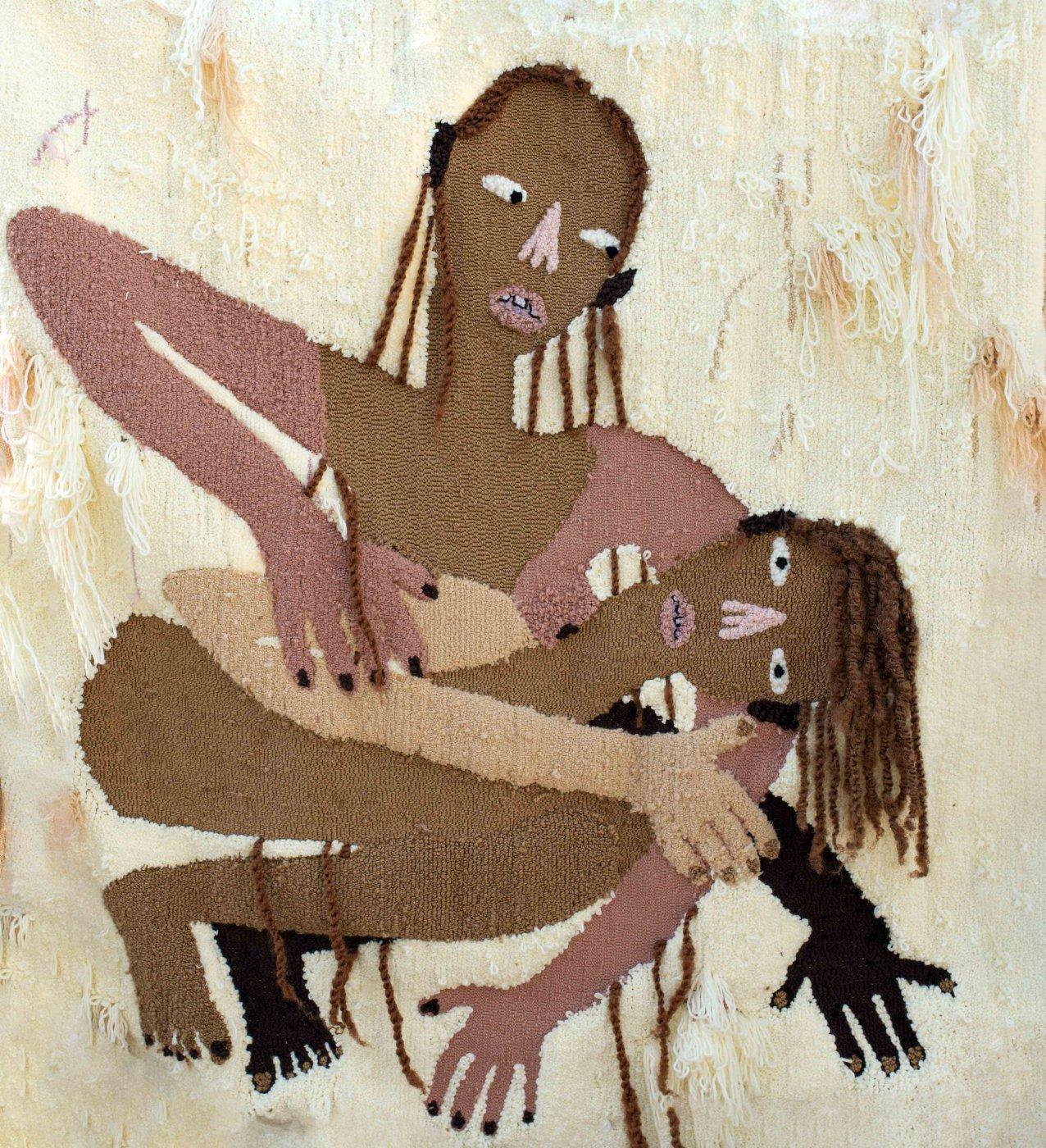Anya Paintsil: ‘I’m a craftsperson, and using my hands is part of the work’s context’

The Welsh Ghanaian artist speaks about the textile works she is making for her upcoming show at Tŷ Pawb in Wrexham.
A version of this article first appeared in the summer 2025 issue of Art Quarterly, the membership magazine of Art Fund.

Who is Anya Paintsil?
Born in Wrexham in 1993, Welsh Ghanaian artist Anya Paintsil is best known for her experimental textile works that draw on West African art and craft traditions, alongside techniques learned in her childhood, such as embroidery, appliqué and rug-making. For her upcoming exhibition, ‘Allanol Always’, at Tŷ Pawb, Paintsil is creating a new body of work that references Welsh folklore and includes a series of freestanding sculptures.
My work is focused on non-representative Black figuration. I’m interested in the ways Black culture expands and links to African history, art history and contemporary craft as opposed to the European fine art canon. Black bodies and Black female bodies remain hyper-visible and stereotyped in Western media, and while traditional African sculpture reveres and platforms strong, voluptuous women with protuberant eyes, these features seem to be currently desirable for white women too.
The exhibition at Tŷ Pawb in Wrexham, where I grew up and recently returned to, responds to these experiences and contexts. It connects to personal feelings of hyper-visibility, particularly my time in Welsh-language education during the 1990s, when there wasn’t a big Black community around me that wasn’t family. ‘Allanol’, in its title, means ‘external’ or ‘exterior’ in Welsh, linking to this ‘otherness’.
My mum is Welsh, and my schooling emphasised creativity through a Welsh lens, including craft, folk dancing and poetry. Around our home were Welsh textiles – blankets and proggy rugs made using latch hooking to pull scraps of fabric through canvas. The women on my dad’s side are seamstresses. My dad is Fante, the ethnic group from Ghana’s coast, and our biggest cultural export is Asafo flags, figurative textiles that came into use as military flags in the late 17th century, blending European heraldic imagery and Akan myths, legends and proverbs. These appliquéd textiles tell a story, and working in this way comes naturally to me. I picked up the importance of the figure from the visual language of the West African art we had at home, where I translated wood into drawings and textiles.

It was obvious the European art history I learned at school wasn’t for or about me. I didn’t see any representation of who I was as a girl or a Black girl, a mixed-race girl or a person from a non-European background. It didn’t resonate. A visit to the American Folk Art Museum in New York was a turning point. I saw jug heads, ceramic vessels from the American South, combining traditional African art with materials people in slavery had access to, and clear links to African visual language.
After 2020 there was a big push from museums and galleries to collect art from Black and minority ethnic artists, to rectify their historical sidelining. That has continued in many, but not all, places. I’m honoured to have my work in collections including the Women’s Art Collection, the Whitworth in Manchester and Glynn Vivian in Swansea. Having work recognised by institutions feels important.
Punch-needle embroidery was my starting point in terms of technique. Each work was made completely by hand, and this is significant because of the special connection between the brain and the hand; it’s non-linear and organic. The tools that I use have limits and offer a certain amount of control with every stitch, and so a work might end up quite different to what I envisioned. The process is repetitive, meditative, almost hypnotic.
I love antique rug-making tools. I have an Airlyne made in nearby Abergele, and I’ve used a 1970s Danish hand-tufting tool called a Danella, which I modified. Last year I made work with an electric tufting gun for the first time. It’s so much faster, but I destroyed it because I wasn’t enjoying the process at all. I’m a craftsperson, and using my hands is part of the work’s context.
‘Allanol Always’ will include some purely tufted portrait works. I’m also collaborating with my partner, Stephen William, to make small, stand-alone sculptures and large fabric collages using hand-tufting techniques and appliqué with different Ghanaian fabrics, old clothes and leather handbags, and fragments of the works that I destroyed. This experimental approach is more sustainable and puts much less pressure on my body but the connection to my subject remains the same.
‘Anya Paintsil: Allanol Always’, 11 July to 25 October, Tŷ Pawb, Wrexham. Free to all, 10% off in shop and café with National Art Pass.